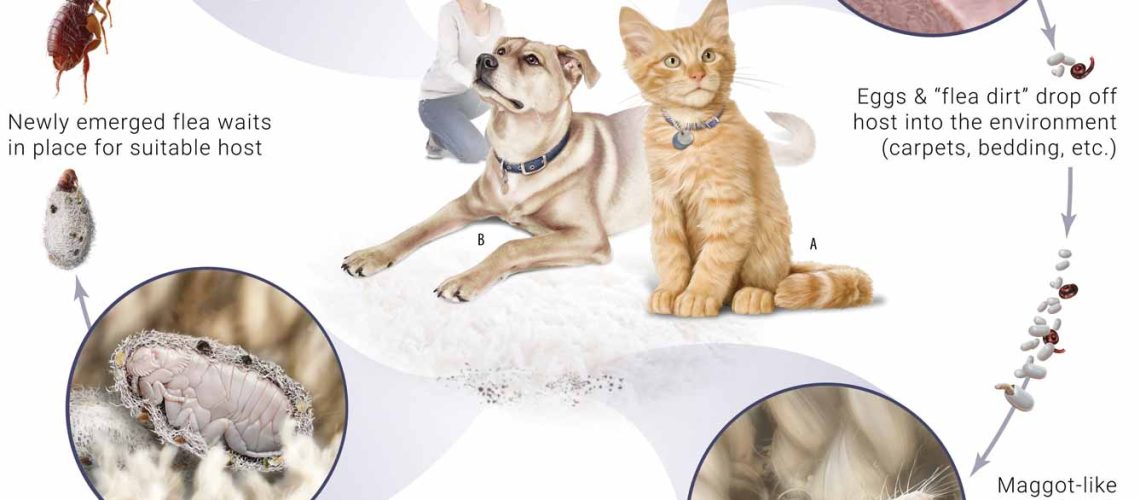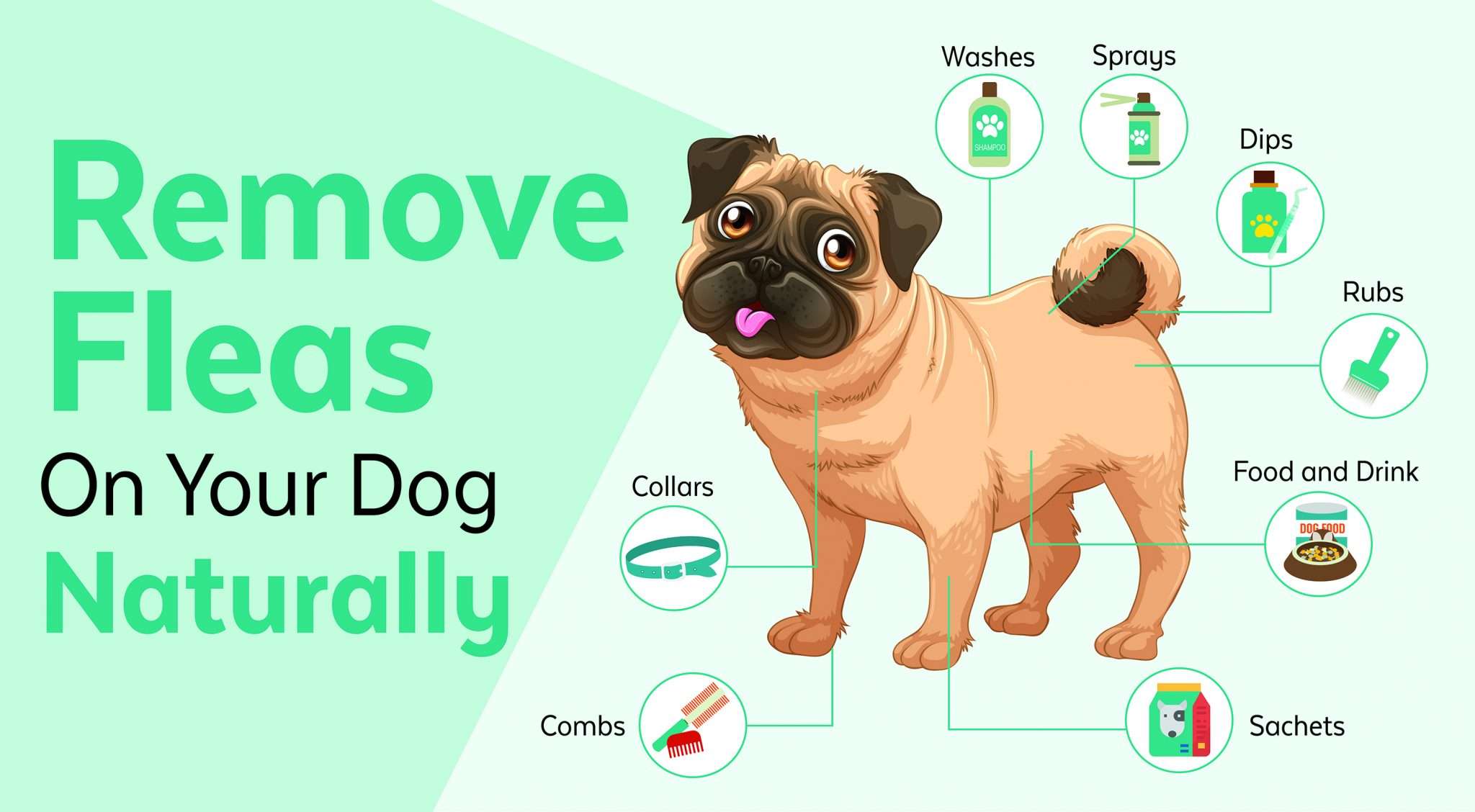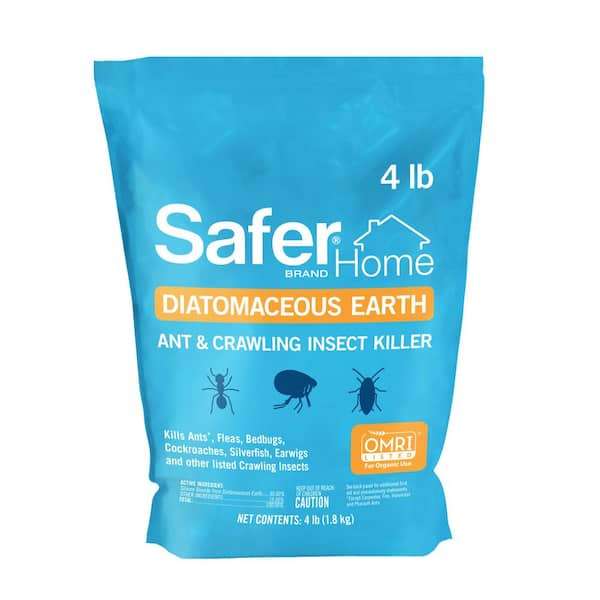Key Takeaways:
- Fleas go through four stages in their life cycle: egg, larva, pupa, and adult.
- The flea life cycle can range from a few weeks to several months, depending on environmental conditions.
- Fleas require a blood meal to reproduce and can lay up to 50 eggs per day.
- Flea larvae feed on organic debris and develop in dark and humid environments such as carpets and bedding.
- Understanding the flea life cycle is crucial for effective flea control and prevention strategies.
Are you ready to uncover the secrets of the unseen world? Brace yourself, because today we are diving into the mysterious life cycle of fleas. Now, you might be wondering why on earth understanding these tiny creatures is essential. Well, my curious friend, let me tell you that this knowledge holds incredible value for both pet owners and anyone interested in pest control. By unraveling the enigma behind the flea life cycle, we can protect our furry companions from these pesky parasites and create a safer environment for ourselves. So, get ready to embark on a journey where we'll explore fascinating facts about fleas and how they reproduce, grow, and infest our homes. Get ready to have your mind blown as we delve into the captivating mystery of the flea life cycle!
The Life Cycle of a Flea: What You Need to Know
Introduction
Fleas are small, wingless insects that are known for their ability to jump long distances. They are pesky creatures that can cause discomfort and health issues for both humans and animals. Understanding the life cycle of a flea is important in order to effectively control and prevent infestations.
How Long Does It Take for a Flea to Complete Its Life Cycle?
The Length of a Flea's Life Cycle
A flea's life cycle consists of four stages: egg, larva, pupa, and adult. The length of time it takes for a flea to complete its life cycle can vary depending on factors such as temperature, humidity, and the availability of a host. On average, it takes about 2-3 weeks for a flea to go from an egg to an adult.
During this time, fleas go through several transformations. Understanding the different stages of their life cycle can help in identifying and targeting them at each stage to effectively eliminate them from your home or pet.
Fleas Survival: Can They Live Without a Host?
Fleas' Dependence on Hosts
Fleas are highly dependent on hosts for their survival. Adult fleas feed on the blood of animals or humans in order to reproduce and lay eggs. Without a host, fleas cannot complete their life cycle.
While adult fleas can survive for short periods without feeding, they need regular access to blood meals in order to continue reproducing. However, flea eggs, larvae, and pupae can survive in the environment (such as carpets or bedding) even without a host present.
The Stages of a Flea's Life Cycle: Explained
The Four Stages of a Flea's Life Cycle
A flea goes through four distinct stages in its life cycle: egg, larva, pupa, and adult. Each stage has its own characteristics and behaviors.
Egg Stage:
- Flea eggs are tiny, oval-shaped and usually white or translucent.
- They are laid by adult female fleas on the host or in the environment.
- These eggs are not sticky and can easily fall off the host onto surfaces such as bedding, carpets, or furniture.
Larva Stage:
- Flea larvae hatch from the eggs within a few days.
- They are small, worm-like creatures that avoid light and burrow into dark places like carpets or cracks in floors.
- Larvae feed on organic matter such as flea dirt (feces), dead skin cells, and other debris found in their environment.
Pupa Stage:
- After going through several molts, larvae spin cocoons to enter the pupal stage.
- Pupae are enclosed in protective cases made of silk-like material mixed with debris from the environment.
- This stage is relatively inactive as the pupae undergo metamorphosis inside their cocoons.
Adult Stage:
- Once fully developed inside the cocoon, adult fleas emerge and start seeking a host for blood meals within a few days to weeks.
- Adult fleas have a flattened body, long legs for jumping, and are capable of reproducing.
- They can live for several weeks to months, depending on environmental conditions and access to hosts.
Reproduction in Fleas: How Do They Multiply?
The Reproductive Process of Fleas
Fleas have a unique reproductive process that allows them to multiply rapidly. Once an adult female flea has found a suitable host and had a blood meal, she can start laying eggs within 24-48 hours.
A single female flea can lay hundreds of eggs during her lifetime. These eggs are not attached to the host but instead fall off onto the environment where the host spends most of its time. This includes areas such as bedding, carpets, or furniture.
Once the eggs hatch into larvae, they feed on organic matter in their surroundings. After going through several molts and reaching the pupal stage, adult fleas eventually emerge from their cocoons and seek out hosts to continue the cycle.
Where Do Fleas Lay Their Eggs? Common Hiding Spots Revealed
Flea Egg Laying Locations
Fleas lay their eggs in various locations where they have easy access to hosts and favorable conditions for development. Understanding these common hiding spots can help in identifying potential flea infestation sources:
- Pets' bedding: Fleas often lay eggs in pet beds or blankets where animals spend a lot of time resting.
- Carpets and rugs: The fibers of carpets provide an ideal environment for fleas to lay their eggs as they offer protection and insulation.
- Furniture: Upholstered furniture can also be a favorite spot for fleas to deposit their eggs, especially if pets frequently use them.
- Outdoor areas: Fleas can lay eggs in shady areas of the yard, such as under porches or decks, where pets may rest or play.
Regular cleaning and vacuuming of these areas can help reduce the chances of flea infestations by removing eggs and larvae from the environment.
Controlling and Preventing Flea Infestations: Understanding the Life Cycle
Effective Control Measures
To effectively control and prevent flea infestations, it is crucial to understand their life cycle. By targeting fleas at each stage of their development, you can disrupt their reproductive cycle and minimize their population:
- Vacuum regularly: Vacuuming not only removes adult fleas but also helps eliminate eggs, larvae, and pupae from carpets, furniture, and other surfaces.
- Wash bedding and pet items: Regularly washing your pet's bedding, blankets, and toys in hot water can kill any fleas or eggs present.
- Treat pets with flea products: Use veterinarian-recommended flea treatments on your pets to kill adult fleas and prevent further infestation.
- Treat the environment: Use insecticides specifically designed for controlling fleas in your home or outdoor areas where infestation is suspected.
- Maintain good hygiene: Keeping your home clean and free from clutter reduces hiding spots for fleas and makes it easier to spot signs of infestation.
By combining these control measures with a thorough understanding of the flea life cycle, you can effectively manage and prevent flea infestations in your home or on your pets.
In conclusion, the flea life cycle is a fascinating and complex process. Understanding how fleas reproduce and develop can help us better prevent and control infestations, keeping our pets and homes flea-free.
What is the life cycle of a flea?
The lifecycle of fleas consists of four stages: egg, larva, pupa (inside a protective cocoon), and adult. This diagram illustrates the typical progression of fleas through these stages. The duration of the flea lifecycle can vary greatly, ranging from a short period of time to several months or even years, depending on the environmental factors during each stage of development.
What kills the flea life cycle?
Lufenuron works by interrupting the process of chitin synthesis, polymerization, and deposition, which stops flea eggs from hatching or developing into adult fleas. This effectively prevents and manages flea infestations by disrupting their life cycle and stopping new populations from forming.
How long can fleas live in carpet without a host?
In the absence of a host, adult fleas have a lifespan of just a few days to two weeks. On cats and dogs with short hair, fleas typically survive for about 8 days, while they can live longer on animals with long hair. Female fleas start laying eggs within 2 days of their first blood meal.
How long can fleas live on humans?
Because fleas have a high body temperature, they are unable to remain on humans for extended periods of time. Additionally, they are unable to reproduce on humans, so they must find animal hosts in order to multiply. Research has indicated that female cat fleas can only stay on humans for approximately 7.4 minutes, while male cat fleas can only stay for about 4.4 minutes.
What month do fleas go away?
In most states, fleas and ticks are most common during the spring and summer months, from May to September. However, in southern and southwestern states, flea and tick season can happen throughout the year. Fleas and ticks, along with their eggs, can be eliminated by high temperatures.
How long does it take to get rid of a flea infestation?
According to the American Kennel Club, it typically takes three to four months to completely eliminate a flea infestation. This is because it takes fleas this amount of time to go through their life stages. Killing the fleas that are not on your cat or dog is the key to successfully combating fleas, according to Cooley.

















